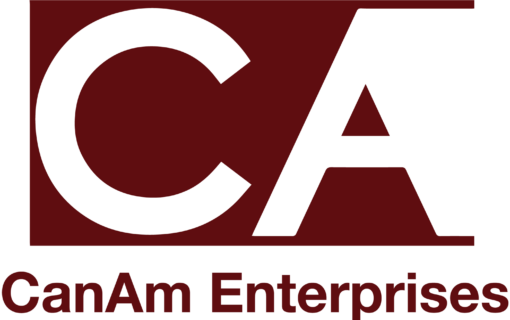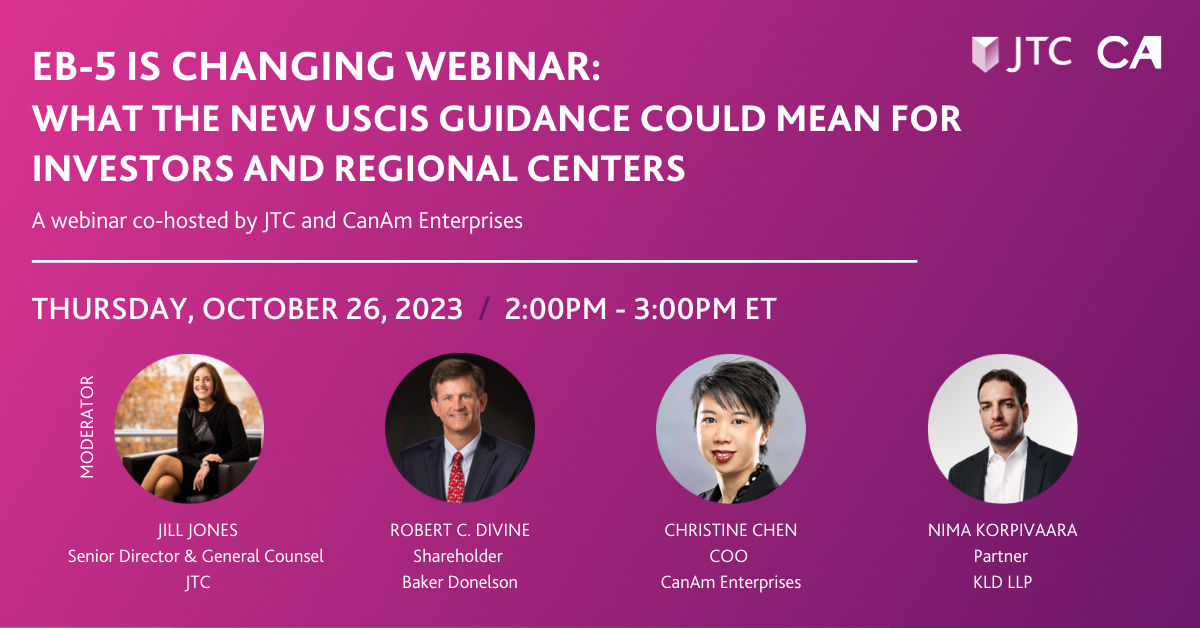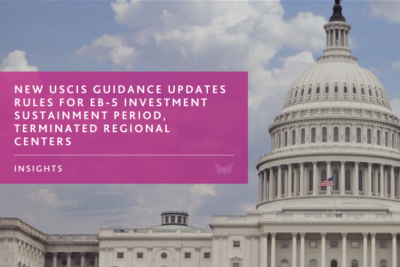By Peter Calabrese,CEO of CanAm Investor Services
With more than seven times the number of applicants seeking H-1B work visas than the actual number of H-1Bs available, it came as no surprise when the USCIS recently announced that it conducted — and quickly completed — yet another selection process to downsize the 780,000+ applicant pool to fit within the 85,000-visa allotment for the fiscal year.
The “H-1B -lottery” system is, by its very nature, an unpredictable and often nerve-racking way to obtain a visa, particularly for Indian workers who constitute about three-quarters of H-1B visas. So, it’s no wonder that people from India are looking for alternatives that are more practical, reliable, and offer more freedom for themselves and their families to work and live in the United States.
H-1B Visa in Brief
The H-1B visa is specifically intended to be a temporary visa for individuals seeking U.S. employment. Initially, H-1B holders are granted permission to stay in the country for a period of three years. After that, they have the option to apply for an extension, which allows them to prolong their stay in the U.S. up to a maximum of six years on that visa. This temporary visa provides an opportunity for individuals to work and contribute their skills to the U.S. job market. No industry in the U.S. has benefited more from the contributions of Indian nationals than the Technology industry. In fact, according to U.S. Census Bureau statistics, one in every ten tech workers in the Silicon Valley is of Indian origin and one in every three start-ups has an Indian co-founder.
The H-1B fallout from Tech Layoffs
Just as America and the rest world were trying to put the worst of the COVID-19 pandemic behind us, the U.S. Tech industry began a widescale labor contraction. According to Layoffs.fyi, over 216,000 tech employees have been laid off since early 2022, leaving many foreign workers who relied on the H-1B program to come and live in the U.S. concerned about their future. Under H-1B visa rules, workers have a 60-day grace period after termination to find new employment or otherwise face immigration consequences. There are other alternatives – options that…
- Give workers seeking to pursue a career or business in the U.S. time well beyond the six-year limit of the H-1B;
- Give parents the opportunity to send their children to the U.S. to study and pursue a career, unencumbered by immigration rules requiring them to return to their home country;
- Give all immigrants and their families the freedom to live and travel in the U.S. without restriction or language requirements.
The visa that extends all these benefits — and more — is the EB-5 visa.
EB-5 as a Solution
EB-5 is a United States visa program administered by the USCIS – United States Citizenship and Immigration Services –that enables qualified foreign investors with the opportunity to earn a conditional two-year green card in return for investing $800,000 in a high unemployment area that creates at least ten U.S. jobs.
If you wish to become a U.S. citizen, your two years as a conditional permanent resident are credited towards the five-year lawful permanent residency requirement for U.S. citizenship. You may apply for U.S. citizenship after this five-year period. While USCIS requires that EB-5 investments to be “at risk,” CanAm only selects projects we strongly expect to be successful and facilitate full repayment.
Over the last 35 years, CanAm has to date repaid more than $2.24 billion in EB- 5 capital, representing 4,500 families and our investors have received more than 15,000 conditional green cards and 8,100+ permanent green cards.
Unlike other, more restrictive visas, EB-5 immigration-by-investment visa holders have no visa sponsorship requirements and can live and work anywhere in America. There are even admission advantages and reduced tuition costs available for you and your family at universities. Thus, the EB-5 program allows investors (and their spouses and unmarried children under 21) to apply for lawful permanent residence if they make the necessary investment in a commercial enterprise in the United States.
Immigration-Friendly Reforms
Changes enacted last year to the law governing the EB-5 program create benefits for someone already in the U.S. on an H-1B visa. Specifically, the EB-5 Reform and Integrity Act (“RIA”) of 2022 allows EB-5 petitioners who lawfully reside in the U.S. to file an application to adjust their visa to that of a lawful permanent resident (Form I-485) concurrently with the filing of their EB-5 petition (Form I-526E). The concurrent filing allows the EB-5 petitioners to remain in the U.S. during the time that his/her Form I- 526E adjudication is pending.
CanAm Enterprises, with over three decades of experience promoting immigration-linked investments in the US and Canada, has a demonstrated track record of success. With over 60 financed projects and $3 billion in raised EB-5 investments, CanAm has earned a reputation for credibility and trust. To date, CanAm has repaid more than $2.26 billion in EB-5 capital from over 4,530 families. CanAm manages several USCIS-designated regional centers that stretch across multiple states. For more information, please visit www.canamenterprises.com.





